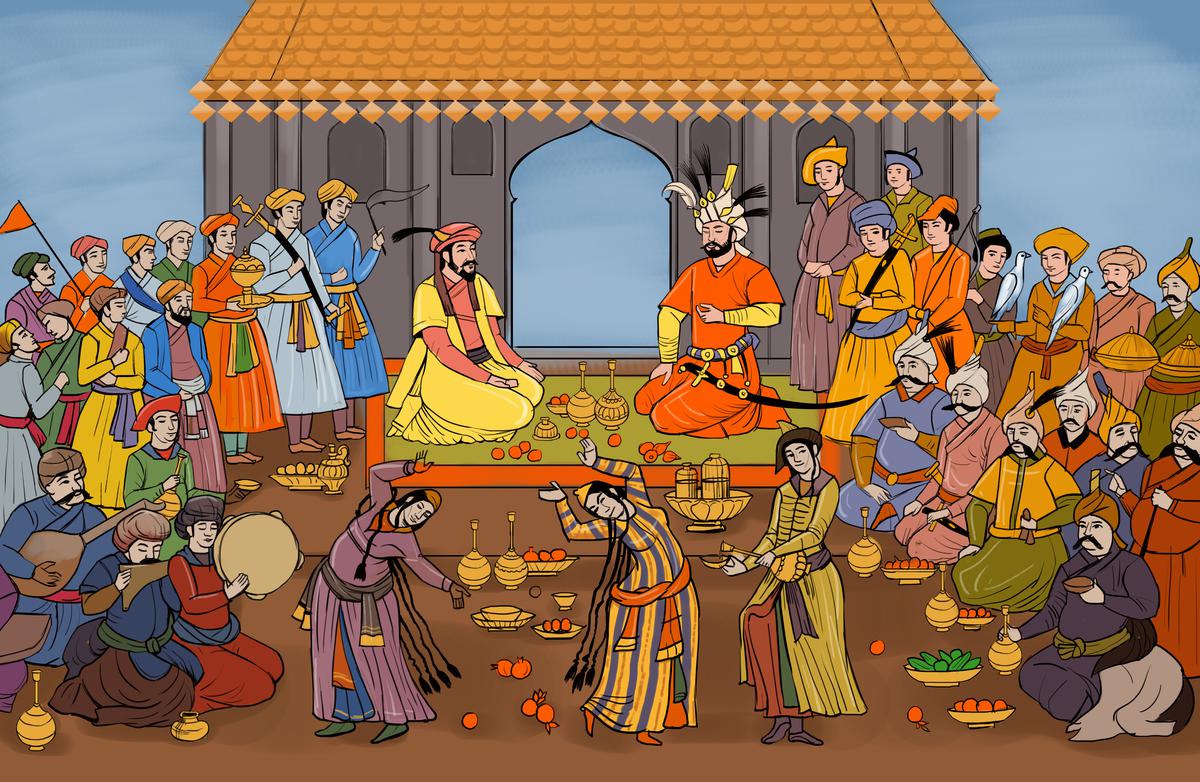Featured
- Get link
- X
- Other Apps
Humāyūn: The Struggles and Resurgence of the Mughal Empire

Humāyūn, the son of the great Bābur, inherited an empire full of promise but fraught with challenges. While Bābur’s victories at Panipat (1526), Khanua (1527), and Ghaghara (1529) had established the Mughals in northern India, they had merely subdued—not reconciled—the powerful Afghan and Rajput factions. These groups, though temporarily restrained, remained hostile to Mughal rule, and their resistance would soon surface with full force during Humāyūn's reign.
Challenges from within and outside the Empire
One of the earliest threats Humāyūn faced came from Bahādur Shah of Gujarat, who, aided by Afghan and Mughal exiles, posed a serious challenge in Rajasthan. Despite Humāyūn’s efforts to conquer Gujarat in 1535, the region remained unstable until Bahādur Shah’s death in 1537, which ended the immediate danger. However, this was just the beginning of a much larger crisis.
Meanwhile, in Bihar and Bengal, a formidable figure was rising—Shēr Shah Sūr, an Afghan soldier of fortune. Shēr Shah consolidated his power with remarkable speed, and by 1539, he decisively defeated Humāyūn at Chausa and again at Kannauj in 1540. These defeats led to Humāyūn’s expulsion from India, marking a temporary end to Mughal rule in the subcontinent.
Exile and Return
Fleeing to Persia, Humāyūn found refuge at the court of Shah Ṭahmāsp, who granted him military support in exchange for his loyalty. With Persian aid, Humāyūn embarked on a remarkable journey to reclaim his lost empire. In 1545, he managed to wrest Kandahār from local rulers, and by 1550, after a series of confrontations with his own brother, Kāmrān, he regained control over Kabul for the third time.
The turning point came when internal strife weakened Shēr Shah’s descendants. Taking advantage of this chaos, Humāyūn launched a successful campaign in 1555. In February of that year, he captured Lahore, and by July, after defeating Sikandar Sūr, the rebel Afghan governor of the Punjab, Humāyūn had reclaimed Delhi and Agra. His return to power marked the revival of the Mughal Empire.
Humāyūn’s Final Days and Legacy
Tragically, just a year after his triumphant return, Humāyūn's life was cut short. In 1556, while descending the stairs of his library, he fell and suffered fatal injuries. Though his reign was short-lived, Humāyūn’s efforts laid the groundwork for the continued expansion and flourishing of the Mughal Empire under his son Akbar.
Humāyūn's tomb in Delhi, completed around 1570, stands as one of the first masterpieces of Mughal architecture. The structure, with its grand domes and gardens, would set the stage for the architectural grandeur that would follow in the Mughal era. In 1993, Humāyūn’s tomb was designated a UNESCO World Heritage site, symbolizing his lasting legacy.
Despite the tumultuous and often tragic nature of his reign, Humāyūn’s resilience in the face of adversity and his eventual restoration of Mughal power made him a pivotal figure in Indian history. His life story is one of struggle, exile, and eventual triumph, a testament to the enduring spirit of the Mughal dynasty.
Popular Posts
The History of the Mughal Empire: A Legacy of Culture and Power
- Get link
- X
- Other Apps
Comments
Post a Comment